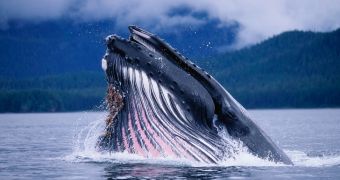Had Captain Ahab had access to high-tech satellites and state-of-the-art software, as wildlife researchers and conservationists do these days, there is no question that “Moby Dick” would have been a much shorter novel.
Not to beat about the bush, it turns out that folks at the British Antarctic Survey have figured out a way to use satellites and computer programs to “stalk” whales worldwide, and determine how many such marine mammals are left in our seas and oceans. Daily Mail tells us that the satellites, which float about at heights of roughly 480 miles (772.5 kilometers), are in charge of taking pictures of the sea.
These pictures are then analyzed with the help of software, whose job is to pin down whales swimming under the surface, the same source details.
This method of monitoring whales has until now been used to monitor whales off the coast of Argentina.
It has proven fairly efficient, which is why the British Antarctic Survey researchers hope that it will one day be used on a global scale.
“Whale populations have always been difficult to assess - traditional means of counting them are localized, expensive and lack accuracy,” explains specialist Peter Fretwell.
Furthermore, “The ability to count whales automatically, over large areas in a cost effective way will be of great benefit to conservation efforts,” he adds.

 14 DAY TRIAL //
14 DAY TRIAL //